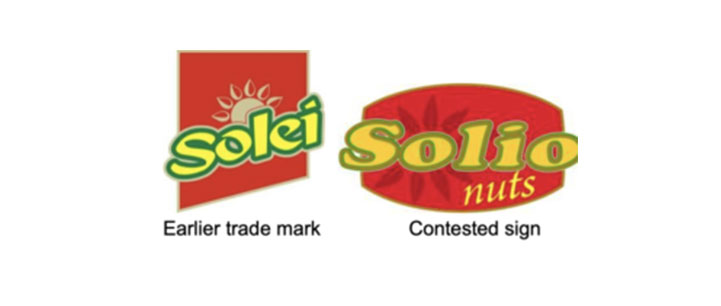THE CASE
Velikov & CO OOD, Bulgaria, represented by IP Consulting Ltd., filed an Opposition against all the goods and services in Classes 29 and 31 of EUTM Application No 17 887 969 (figurative mark). The opposition is based on inter alia, European Union trade mark registration No 7 559 107, (figurative mark).
After considering all the facts presented the Opposition Division of the European Union Intellectual Property Office decided that Opposition No B 3 051 882 against the EUTM application is well founded and the contested trademark shall be rejected for all the contested goods and services.
THE GOODS
The contested goods in Class 29 are identical to the opponent’s goods.
The contested goods in Class 31 may be essentially the same goods, only in different stages of processing. While the contested goods are processed, the opponent’s goods are raw. However, this does not prevent these goods from being available at the same commercial spots and even displayed on the same shelves. Furthermore, they target the same consumers and may have the same commercial origin. Therefore they are highly similar to the opponent’s goods.
THE SIGNS

Visually, the signs coincide in their initial three letters “SOL” in their most striking or dominant verbal elements. However, they differ in their last two letters “EI” in the earlier mark versus “IO” in the contested sign. It is noted that there is a coincidence also in the presence of the vowel “I”, albeit in a reversed order within these two letters. Moreover, despite being partially decorative, the additional set of coincidences, as addressed above, creates a further visual similarity between the signs in question, especially taking into account the use of colours and the arrangement and position of similar elements. Therefore, the signs are visually similar at least to an average degree.
Aurally, the signs coincide in the sound of their first three letters “SOL” and differ in the sound of their last two letters, respectively. Consequently, the signs are aurally similar at least to an average degree, provided that the additional word “nuts” of the contested sign will not be pronounced due to its secondary character within the sign.
Conceptually, the signs are similar at least to an average degree to the extent that they coincide in the concept of “a sun” contained in their verbal elements, and reinforced by the figurative elements on their backgrounds.
Degree of attention of relevant users
According to the Court of Justice, the average consumer is relatively well informed, moderately observant and careful when choosing a purchase. It should be born in mind that the level of attention varies to the relevant category of goods and/or services (CJEU Decision, C-342/97 Lloyd, paragraph 26).
In the present case, the Opposition commission considers that, the goods found to be identical or similar (including to varying degrees) are directed at the public at large. The degree of attention will vary between below average and average since some of the goods belong to the category of frequently purchased goods of low prices.
Conclusion of EUIPO Opposition division
Considering all the above, there is a likelihood of confusion on the part of the Spanish- speaking part of the public.
The opposition is well founded on the basis of the opponent’s EUTM registration No 7 559 107. It follows that the contested trade mark must be rejected for all the contested goods.

